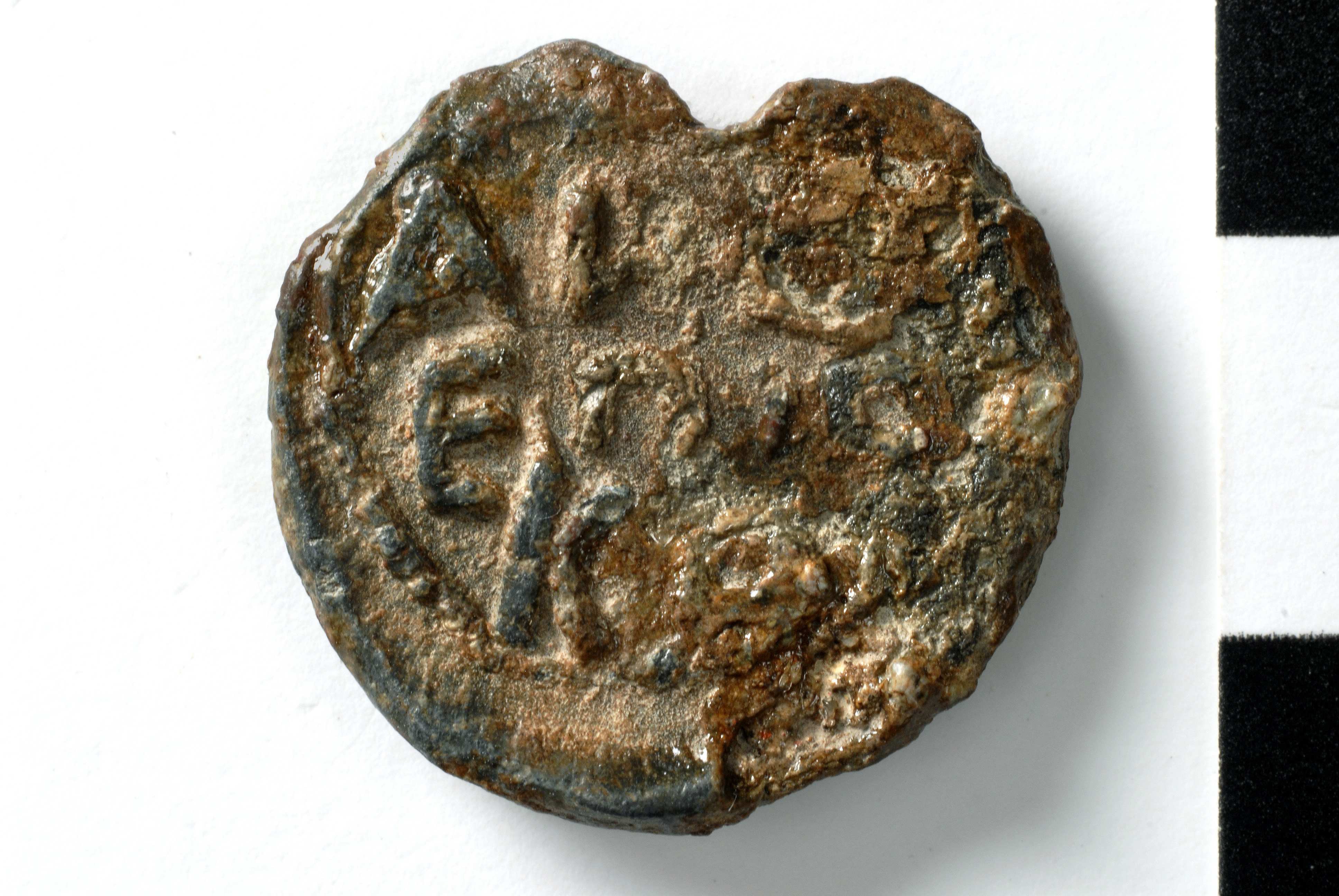Andrew bishop of Andrapa (sixth century)
Obverse
Inscription of three lines. Linear border.
δ
πισ
κ.
Ἀνδρέα ἐπισκόπου
Reverse
Inscription of three lines. Linear border.
.
δρ
ππ/
Ἀνδράπων
| Accession number | BZS.1955.1.4691 |
|---|---|
| Diameter | 19.0 mm |
| Previous Editions | DO Seals 4, no. 25.1. Laurent, Corpus V/3, no. 1723 (with misreadings). |
Translation
Ἀνδρέα ἐπισκόπου Ἀνδράπων.
(Seal of) Andrew, bishop of Andrapa.
Bibliography
- Catalogue of Byzantine Seals at Dumbarton Oaks and in the Fogg Museum of Art, Vol. 4: The East (Open in Zotero)
- Notitiae Episcopatuum Ecclesiae Constantinopolitanae (Open in Zotero)
- Le Corpus des sceaux de l’empire byzantin (Open in Zotero)
- Hierarchia Ecclesiastica Orientalis: Series episcoporum ecclesiarum christianarum orientalium (Open in Zotero)
- Galatien und Lykaonien (Open in Zotero)
- Die Städte Kleinasiens im 7. und 8. Jahrhundert (Open in Zotero)
- Η Μικρά Ασία των θεμάτων. Ἐρευνες πάνω στην γεωγραφική φυσιογνωμία και προσωπογραφία των βυζαντινών θεμάτων της Μικράς Ασίας (Open in Zotero)
- Kleinasiatische Ortsnamen (Open in Zotero)

Commentary
Laurent read the first line on the obverse as ΑΟΣ and, assuming that one more line was missing above, restored the name [Νικό]λαος. Since the reverse carries an inscription of three lines, it is reasonable to assume that the obverse inscription has the same. The first visible letter is Α and the letter following is either ι or a broken letter formed at left with an upright bar (which we read as N). The last letter in the line was formed at bottom with a horizontal line, suggesting Δ.
The last letter in the third line on the reverse is definitely not omega. The last line contains the letter π twice indicating that the name has a plural ending.
Andrapa (also known as Neapolis and Neoklaudioupolis), the modern Vezirköprü, was an episcopal see as early as the Vth century. It is mentioned as a bishopric of Helenopontos under the metropolitan of Amaseia in the Notitiae episcopatuum from the VIth to the XIIIth c. (Darrouzès, Notitiae, 209, 357). See Laurent, Corpus V/1, 311 (list of bishops in Fedalto, HEO I, 79-80; Galatien und Lykaonien, 126; Brandes, 123; Zgusta, 75-76; Mikra Asia them., 149.